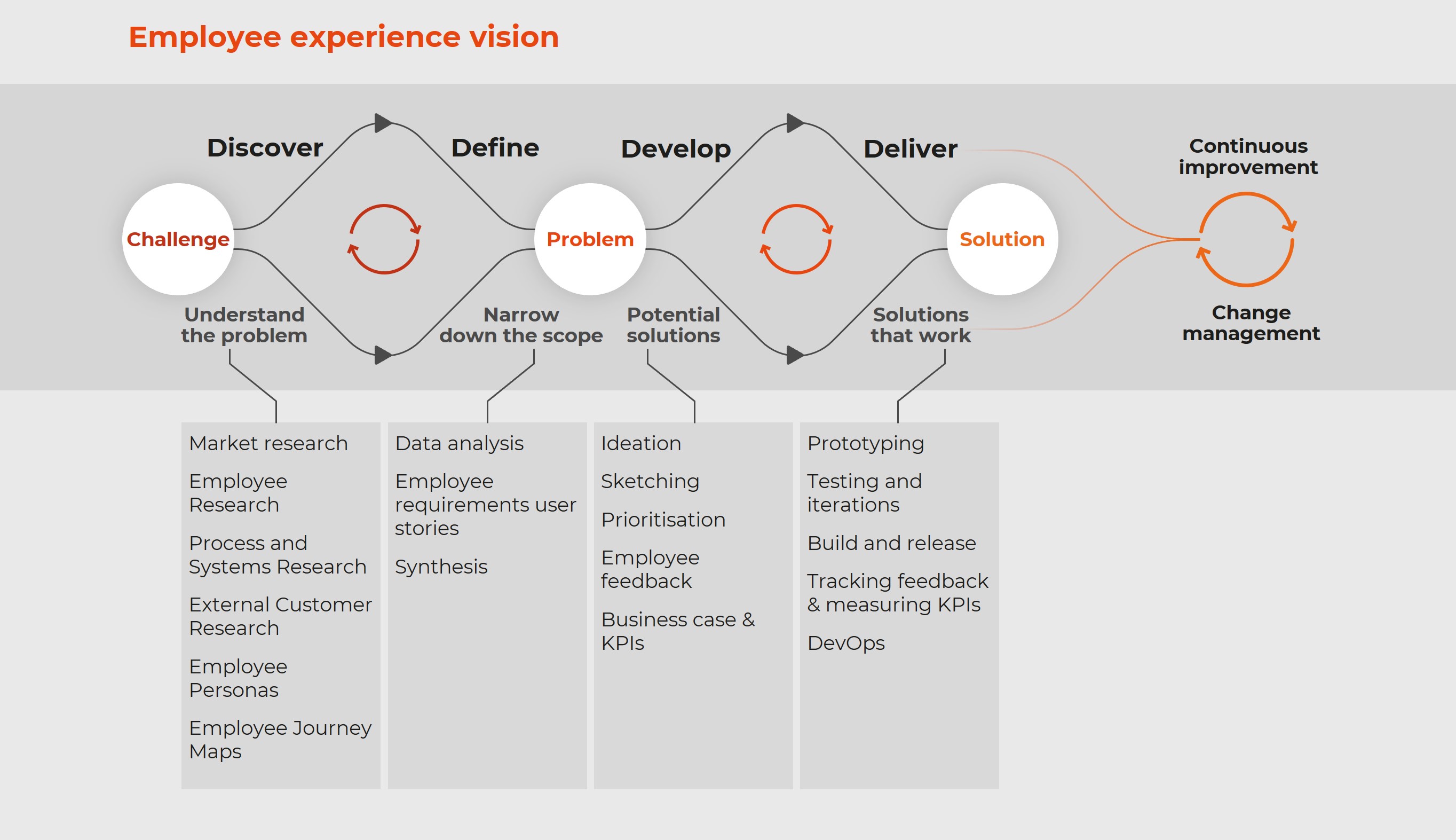
How to improve employee experience to boost return on digital investment
The 2023 Gartner® 'CIOs: Improve Digital Transformation Success by Leveraging Customer Experience Management' report found that "The need for digital investments is growing. Despite this, many efforts fall short of achieving desired outcomes. To succeed, CIOs must ensure customer experience tools and practices are used to align business goals, quicken launch times, and meet internal and external customer needs."
The report recommendations state that CIOs responsible for digital investments must "Improve digital optimization outcomes by involving internal customers in decision making and clearly defining business objectives through the use of baseline customer experience (CX) management."

Gartner mentions that "In practice, a company’s first digital optimization efforts focus on improving the external CX. This is because the return on investment (ROI) is more obvious to the business. For example, it’s easier to envision the ROI of e-commerce improvements than automating parts of the IT service desk. Internal CX optimization often follows once digital investments have proven value to the external customer. Holistically designing for all internal and external customers, however, creates the biggest impact, as shown by the total experience trend."
At Step5, we share this view – to achieve the end goal of delivering exceptional experience for our external customers, we need to enable those who are delivering that experience, the internal customers - our employees.
According to Gartner, "Many digital investments fall short of success because they don’t design for the needs of internal and external customers. Internal digital optimization is challenged by fear of failure, resistance to change, mismanaged expectations, low adoption and low employee engagement."
Improving employee experiences throughout their career lifecycle can boost the real value of digital investment. It helps organisations attract talent, streamline the time it takes from joining the company to reaching their full potential and stay motivated, productive and engaged throughout their employment.
With that said, how might we improve our employee experience to get the best return on our digital investment?
The link between return on digital investment and employee experience
The ability to deliver business outcomes to budget and on time is directly linked to employees’ motivation and capability to deliver the associated work. Any organisational factors that negatively impact the employees means that it will slow them down in achieving the outcomes your digital investment is aiming to drive.
Obtaining clear data on how employee experience impacts return on investment can be tricky as it’s not always tangible. For example, it’s difficult to calculate the loss of productivity due to lack of motivation driven by employees' lack of engagement with the company’s business objectives or purpose.
To gauge the current state of employee experience, we recommend mapping out the employee lifecycle – from attraction and recruitment through to separation. This can then be expanded to show the relationships between different components — people, tools, and processes — that are directly tied to touchpoints in a specific employee journey for the business area concerned.

Overlaying this with data available – for example, the Great Place to work survey results, the adoption rate of different systems or the rework involved in particular processes will provide some good insights on the ‘moments of truth.’
Identifying the ‘moments of truth’ (interactions where the employee forms opinions of the company or the internal digital optimisation programme which then drives their positive or negative behaviours) will help you prioritise which areas you should focus your efforts in order to deliver the biggest impact on employee experience.
Using Design Thinking to redefine employee experience
Once the priority challenge areas are defined from an employee lifecycle point of view, we recommend following the Design Thinking approach to drive improvement while staying focused on the end customer.
A common method, illustrated below and tailored to the internal customer, shows the Double Diamond framework which helps organisations follow a structured approach to take the design process from problem to solution space.

This approach guides the team to explore the issue more widely or deeply (divergent thinking) to then take focused action (convergent thinking).
Divergent thinking at the Discover and Develop stages invites us to think broadly and keep an open mind because a particular issue can be a combination of numerous factors which also means that there are several solutions that may address it. Convergent thinking at the Define and Deliver stages is about finding the patterns that will help us narrow down the problem scope and consciously pick the solution that is most desirable, viable and feasible. This ensures that the problem is understood before jumping to solutions, driving the investment to the area which will deliver most value for money.
Using a simple example, imagine that the challenge is poor adoption rate of an employee tool. The reason behind it can be the perceived usefulness, training, awareness, or user-friendliness of a tool. If employee interviews and shadowing sessions uncover that users are frustrated by having to manually input data into the tool, the solution could be to explore integration with various data sources or use a different system altogether. The cost benefit analysis of both options will then help the business to decide on the best route and proceed with designing the to-be employee journeys and technical build.

Delivering internal optimisation programmes – what are the common ‘gotchas’?
Adopting the Design Thinking approach helps us find the right problem to solve and solve it in the right way to get the best return on our digital investment. However, even if followed to a tee, there are a few key themes emerging from our experience with working with various organisations that can hinder the progress of achieving the outcomes.
In broad terms, it is the lack of strategic capabilities to enable the ‘bigger picture’ view across the organisation, appropriate governance and benefit realisation and change management to drive the momentum.
 | Strong leadership is key in driving ‘10x’ rather than ‘10%’ improvements. This means having leadership capabilities within the programme to encourage the team to experiment and ‘think big’ as well as strategic architecture capability overseeing the programme and connecting the dots across the various initiatives and systems to amplify the positive outcomes. |
 | Change management is essential in getting the initial buy-in and preventing resistance to change. This includes timely and tailored communications to stakeholders clearly articulating ‘what’s in it for them’, effective training, measuring adoption and feeding back to the development team to continually iterate and improve through the customer experience management practices. |
 | Governance and benefits realisation: Defining the expected benefits and success criteria and planning the handover ‘handshakes’ between the project and operational teams upfront is necessary to ensure smooth transition to business as usual. It is also essential to know when to pause or stop an initiative. This can be because it is struggling to achieve the benefits to budget and time or is superseded by a wider industry change. Please see our article on 'How to define your PMO and drive value' for more information on this topic. |
According to Gartner, "Overall, 59% of companies fall below expectations in speed to complete, and 52% fall behind in delivering on the speed to realize value. Nearly a third of respondent companies have a digital execution gap. By applying CX management, CIOs can influence improved digital transformation performance and success rates."
Looking for support?Assessing your existing customer experience management capability and embedding improvements across the organisation can be a daunting task. Step5 has worked with multiple organisations to help define and establish effective customer (internal and external) strategy, measurement, and delivery frameworks. Our experts are happy to share our experience and support you on your journey to mature experience management. |
Contact us today for more information.


